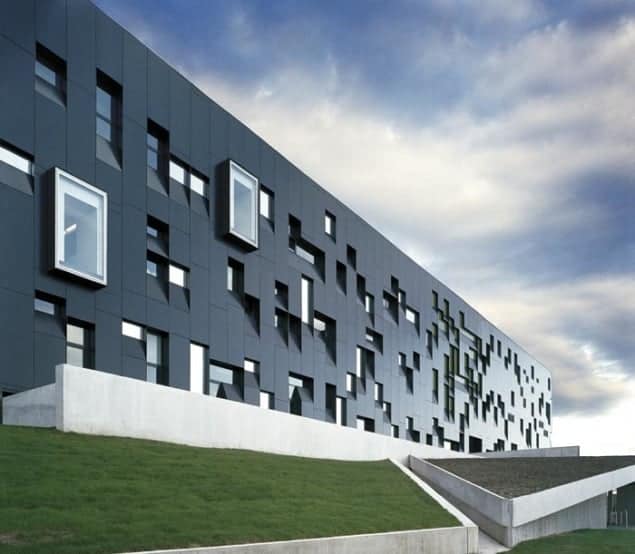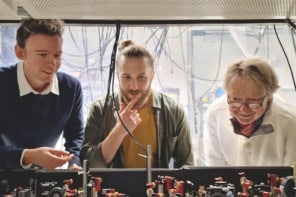First Principles: The Crazy Business of Doing Serious Science
Howard Burton
2009 Key Porter Books
$24.95 pb 286pp

After a period in power, revolutionaries rather depressingly turn into conservatives, eager to preserve the status quo. This is as true in the academic enterprise as it is in the world of politics. Academic institutes are often portrayed as stuffy, inhibiting innovation and neglecting the adventurous or unorthodox – especially by those who feel stifled or ignored by the establishment. Such vocal critics of the establishment rarely have the chance to try something new with the resources needed to make a real impact.
Howard Burton was an exception. Just over a decade ago, as a newly graduated physics PhD searching for a job, any job, Burton was given a chance by Mike Lazaridis – co-founder of RIM, makers of the Blackberry electronic device – to create a new project to nurture fundamental physics. Suddenly, Burton found himself developing a vision for what would become Canada’s Perimeter Institute for Theoretical Physics: a major new institute that would focus on basic science, untrammelled by the pressures of conventional university life, and with a multimillion-dollar endowment.
Building such an institute has, of course, been tried many times before – by Abraham Flexner at the Institute for Advanced Study in Princeton , and by Eamon de Valera at the Dublin Institute for Advanced Studies, to name just two. But the Perimeter Institute was supposed to be different from anything previously attempted. Ambitious plans were therefore formulated to build this new institute in the fairly obscure town of Waterloo, Ontario (the home of RIM), and to make it a world centre for work on cosmology, quantum foundations and quantum gravity.
Howard Burton’s book on this process, First Principles: The Crazy Business of Doing Serious Science, sets out a very personal view of how the institute started. It titillates those who know a little about the initiative by including Burton’s own personal journey from run-of-the-mill and rather directionless PhD student, to becoming director and recruiting theorists from around the world, to building a very glamorous centre, and finally to his sudden and inexplicable departure in May 2007.
The book is written in a rather breathless style, full of touchingly naive views of the world of science. Burton writes tellingly of his worldwide tour to get advice from the mandarins, the movers and the shakers of modern theoretical physics. Like a child with his face pressed up to a sweetshop window, he was eager to find out the secrets of success from gurus such as Freeman Dyson in Princeton, Chris Isham in London and Roger Penrose in Oxford. As a consequence, quantum gravity became a “must have”, as did foundational studies of quantum mechanics. An encounter with Artur Ekert (wrongly described here as David Deutsch’s student rather than mine) brought in quantum computing and quantum information science – both of which Burton seems to have thought of, oddly, as a practical balance to the other, more esoteric subjects.
A decade later, how do all these acquisitions measure up? It is hard to judge from Burton’s prose, but to me, at least, the hiring of the quantum-computing scientists was inspired, and did produce world-leading insights. I am much less convinced that the past decade of substantial investment by Lazaridis (matched by very generous funding from Canadian provincial and federal sources) in the other areas has produced much of comparable substance. Despite all Burton’s talk of the need “to create an environment where theorists and experimentalists could naturally and productively interact on a regular basis”, there is not much to garner from his book on how to do it, or how the end result is any different from a well-funded research institute to be found in any world-class university.
But perhaps this failure is revealing. For, after 10 years of operations, has the Perimeter Institute ended up as anything more than a well-funded facility attached to a university, operating in pretty much the standard model we see everywhere, with tenure track, graduate students and the like? Well, no. The razzmatazz and the PR have been great. So has the outreach activity. The building looks terrific, although so do many others on campuses around the world, and it has a bistro that puts to shame most departmental cafes. But has the funding model allowed the inhabitants of Perimeter to break the mould and do something unique, beyond anything you would find, for example, in one of Germany’s Max Planck institutes? Not really.
Do not get me wrong. Good science has been done there, and careers have been nurtured. Indeed, many of my own former students and postdocs have enjoyed themselves greatly in Waterloo. But they have also done so in Munich, Brisbane and in my own Institute for Mathematical Sciences at Imperial College London. So has the Perimeter Institute been more than a set of good research groups, puffed up by a highly effective PR exercise?
We all expected so much to come from this imaginative and bold venture, and I am afraid the reality has not fully measured up to our expectations. The institute now has new leadership in the former Cambridge University cosmologist Neil Turok, and will doubtless move in fresh and exciting directions. But Burton’s book, while concerned with a fascinating endeavour, sheds little light on how to build a new institute that breaks free of the constraints of the past. Instead, it portrays a rather troubled individual who was, on occasion, out of his depth and too prone to hero-worship established figures, and who after all that promise and hype set up what inevitably became part of the scientific establishment.



